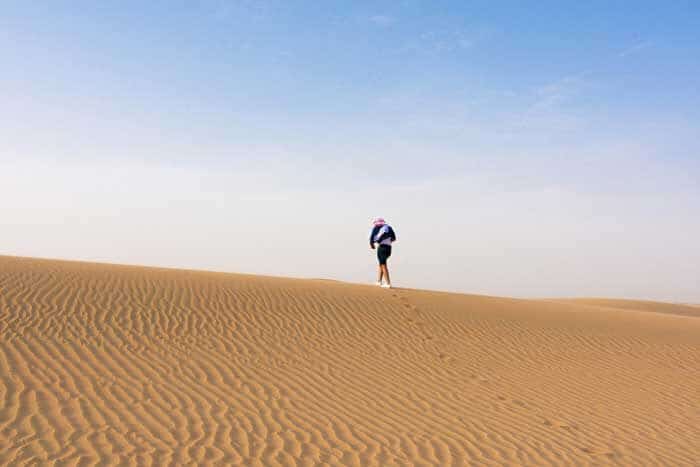If you’ve never had the opportunity to explore beyond the UAE’s big cities, it’d be easy to assume that this is a country of towering skylines with only barren desert-scape in between. You might be imagining that wildlife is pretty limited. However, this is far from the truth.
The UAE is a country with a far more diverse range of habitats than many people realize. Alongside the cities and desert areas, there are also delicate ecosystems in the form of wetlands, mangroves, mountain ranges, wadis, and an incredible coastline.
The UAE is home to dozens of National Parks and other officially protected areas, including sanctuaries, wetland nature reserves, and conservation areas. This means that the emirates are still home to some amazing creatures, freely able to enjoy their natural surroundings without threat.
Read on to find out about a few of the UAE’s most fascinating inhabitants and where, if you are lucky, you might catch a glimpse of them.
Greater Flamingos

The greater flamingos are large birds that capture the imagination of many people thanks to their unusual pink color and elegant shape.
They live in large groups, wading in shallow salty waters where they feed on brine shrimp and algae. And did you know that it is their diet that gives them their beautiful pink color? Flamingo chicks are grey but become pinker as they consume more and more of the pigments found in their natural diet.
Where to find them
Greater flamingos breed regularly at the Al Wathba Wetland Reserve in Abu Dhabi. They can also be regularly spotted in the Eastern Mangrove National Park in Abu Dhabi and in the Ras Al Khor Wildlife Sanctuary in Dubai.
Dhub
Although this desert-dwelling creature is intriguingly known as the ‘fish of the desert’, it’s actually a spiny-tailed lizard that looks much more like a tiny dinosaur.
They begin the day dark-grey, but as the sun warms them, they turn beige. This color change helps them reflect sunlight and maintain temperature and camouflages them to fit unnoticed into their sandy habitats.
If it is spotted by a predator like an eagle or desert monitor, its first line of defense is its razor-sharp spines. Dhubs that successfully avoid these predators can live for as long as 80 years.
Where to find them
Dhubs are shy creatures and well-camouflaged. If you are feeling lucky, you could try the Dubai Desert Conservation Reserve, just outside the city, or the more mountainous Mleiha area in Sharjah.
Greater Spotted Eagle
The greater spotted eagle is a large bird of prey with a wingspan of more than 1.5 meters — a particularly magnificent sight. It might be surprising to learn that, despite its name, an adult greater spotted eagle does not have spots. White spots are noticeable on the young, but these disappear as the birds reach adulthood.
Where to find them
The Ras Al Khor Wildlife Sanctuary in Dubai is one place where you might spot a greater spotted eagle. However, they are a migratory bird, only spending the winter in the region, so make sure to visit at the right time of year. Out of this season, the greater spotted eagle heads north for breeding, to areas in Europe and Northern Asia.
Caracal
The caracal is a large cat and the biggest ground-based predator in the UAE and is usually referred to as the desert lynx. One of its most interesting features is its black-tufted ears, which can make an array of motions that help alert them to the sounds of prey.
The caracal is almost silent in its movements, meaning it is a fearsome predator. It can also leap high enough to catch low-flying birds and overcome prey more than twice its size.
Where to find them
Caracals are shy mountain dwellers, preferring rocky terrain well away from humans. They are now an incredibly rare sight due to illegal hunting and loss of habitat. In early 2019 in Abu Dhabi, a caracal was caught on camera for the first time in 35 years in this particular emirate in the Jebel Hafeet National Park.
Responsible tourism
The sadly decreasing numbers of the caracal and other precious native species are a reminder of how we must protect the natural habitats that remain.
Education is central to this. After all, in the words of world-renowned natural historian Sir David Attenborough, “’ No one will protect what they don’t care about; and no one will care about what they have never experienced.”
With this in mind, a range of opportunities, including an app and many organized activities, have been launched to help the UAE’s young people reconnect with nature, encourage them to visit the UAE’s wilder spaces and learn how to protect the natural habitats of these incredible creatures.
If you, too, would like to head out and spot some of the UAE’s wildlife, then it’s best to head to a designated nature area where there are specially designed trails that will help you avoid disturbing precious flora and fauna. Better still, attend an organized activity where experts will be on-hand to help explain more about the local environment and its inhabitants.
Finally, remember to keep noise to a minimum when out in the midst of nature, and always take your rubbish home with you.
Sources:
Primarily the client’s own Knowledge Hub.
Also,
http://datazone.birdlife.org/species/factsheet/greater-spotted-eagle-clanga-clanga










